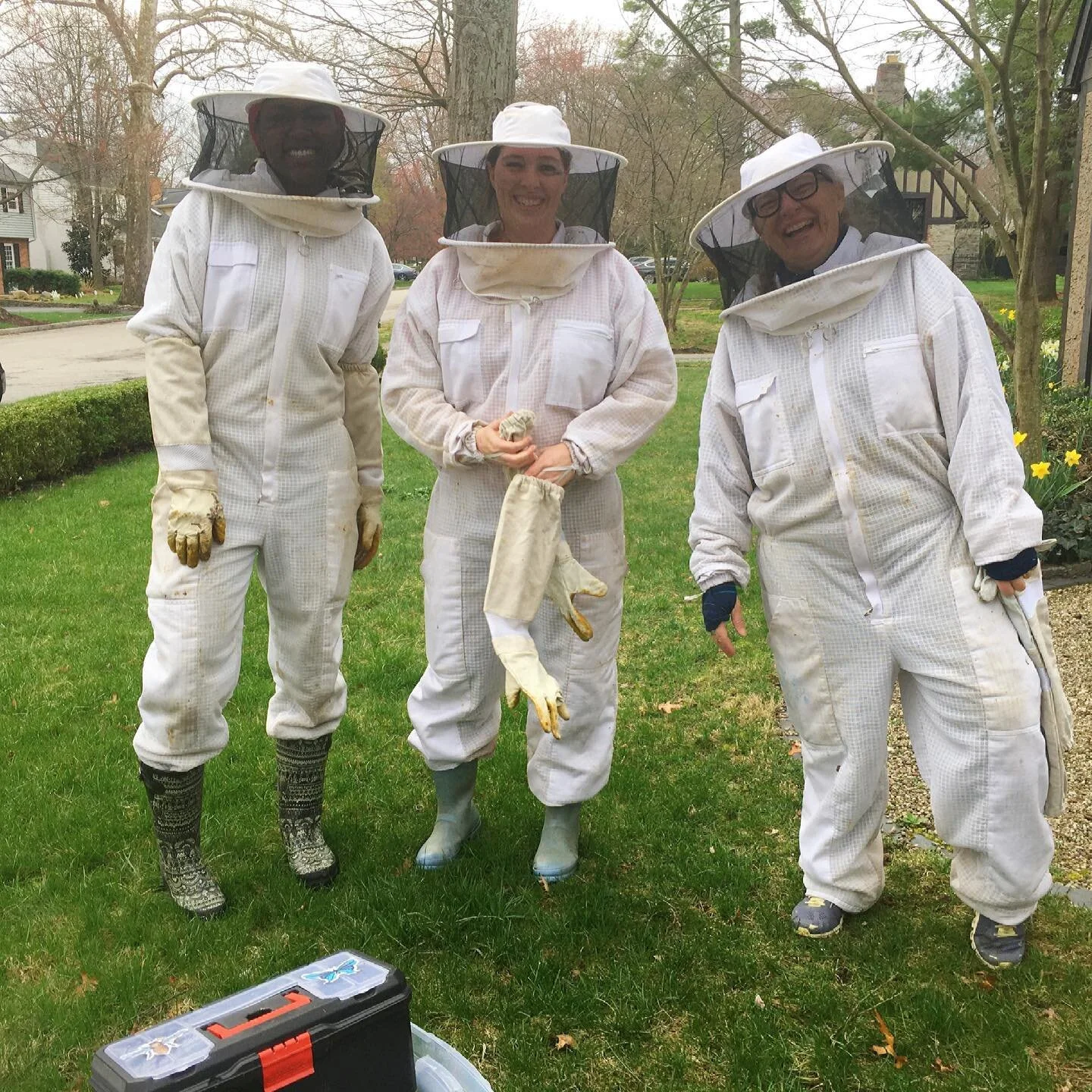Fight of the Bumblebee
Sylvana Ross, Carrie Driehaus, and Jenny O’Donnell of Queen City Pollinator Project
Spring is an especially glorious time in the Ohio Valley. Lush green grass, gorgeous flowers, and blossoming trees make every venture outside a feast for the senses.
Now imagine spring without the blossoms.
“Approximately 80 percent of flowering plants on earth rely on pollinators for reproduction,” says Carrie Driehaus, one of the founders of the Queen City Pollinator Project (QCPP).
“But honeybee keepers see annual losses of about 40% of their colonies. Native pollinators on the endangered species list and humans are largely responsible,” she says.
Adopt A Bee
From May 3 to 31, you can adopt a bee at the Cincinnati Art Museum for a $5 or $10 donation.
Each donation provides an opportunity to name one of the 60,000 bees who will reside in the museum’s two hives. Additional contests will allow the public to vote for names of the queen bees. All funds raised will support the museum’s community wellness initiatives.
Visit www.cincinnatiartmuseum.org/bees for more information.
Seeing a need for more education, Driehaus, along with Jenny O’Donnell and Sylvana Ross, developed the QCPP. The trio of friends is working to unite the city around pollinator support and protection and provide education and resources to conserve pollinator diversity. QCPP uses honeybee hives as a model for education, while focusing on native pollinators in our efforts for conservation.
The Cincinnati Art Museum’s focus on community wellness makes it an excellent partner for QCPP. This month two new beehives are being installed on museum grounds. Since pollinators are a vital part of a balanced ecosystem, bringing in honeybees can help the health of the entire community.
“Urban spaces provide a unique opportunity to support pollinators, as well as create educational opportunities for all involved,” says Driehaus. “We are sure everyone who sees the bees will be ‘pollen’ in love.”
The Women’s Committee of the Cincinnati Art Museum is the hive sponsor and the program is supported by the museum’s Green Team made up of museum staff members.
The hives will be in the pollinator garden on the west side of the building. Additional hives may be added in the future. These “friendly” bees which rarely sting can travel up to three miles from their hive, so the museum’s bees may be seen all over the city.
In future years, sweet success with the program might mean the museum bees produce honey to use and sell. This could mean future Terrace Café recipes highlighting honey and some jars to purchase in the Museum Shop. Community programs will be developed, and opportunities to educate and inspire with bees from artworks in the museum’s permanent collection are underway.
–Tricia Suit
About Queen City Pollinator Project (QCPP)
QCPP challenges businesses in Greater Cincinnati to become community leaders in environmental sustainability and challenges every citizen to take action to protect and support pollinators in their own yards. Learn more at queencitypollinatorproject.org.



